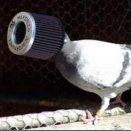Do Late Series Ii R33's Have Neo?
Announcements
-
Similar Content
-
Latest Posts
-
By Dose Pipe Sutututu · Posted
Is this a brand new LSD? if so, have you followed any break/bed in procedure for it? Usually involves heaps of figure 8 patterns, a fluid flush. -
It's TWO steering wheels actually. 😛 one for each hand They are wheels, and they steer!
-
Did you even watch the video? Its not a steering wheel.
-
Are you sure the plugs are firing in the correct sequence at the correct time? Black or fuel soaked spark plugs are unlikely to want to fire properly. Fit a set of cheap coppers (like BCPR6ES) until you diagnose the problem. Are you sure the injectors are working properly, ie not flooding the cylinder?
-
Did you only check spark on cylinder 1? Give all cylinders a check for spark. So this swap you've done, the car had an RB25 in it before with this Z32, and you've just dropped another RB25 into it?
-







Recommended Posts
Create an account or sign in to comment
You need to be a member in order to leave a comment
Create an account
Sign up for a new account in our community. It's easy!
Register a new accountSign in
Already have an account? Sign in here.
Sign In Now